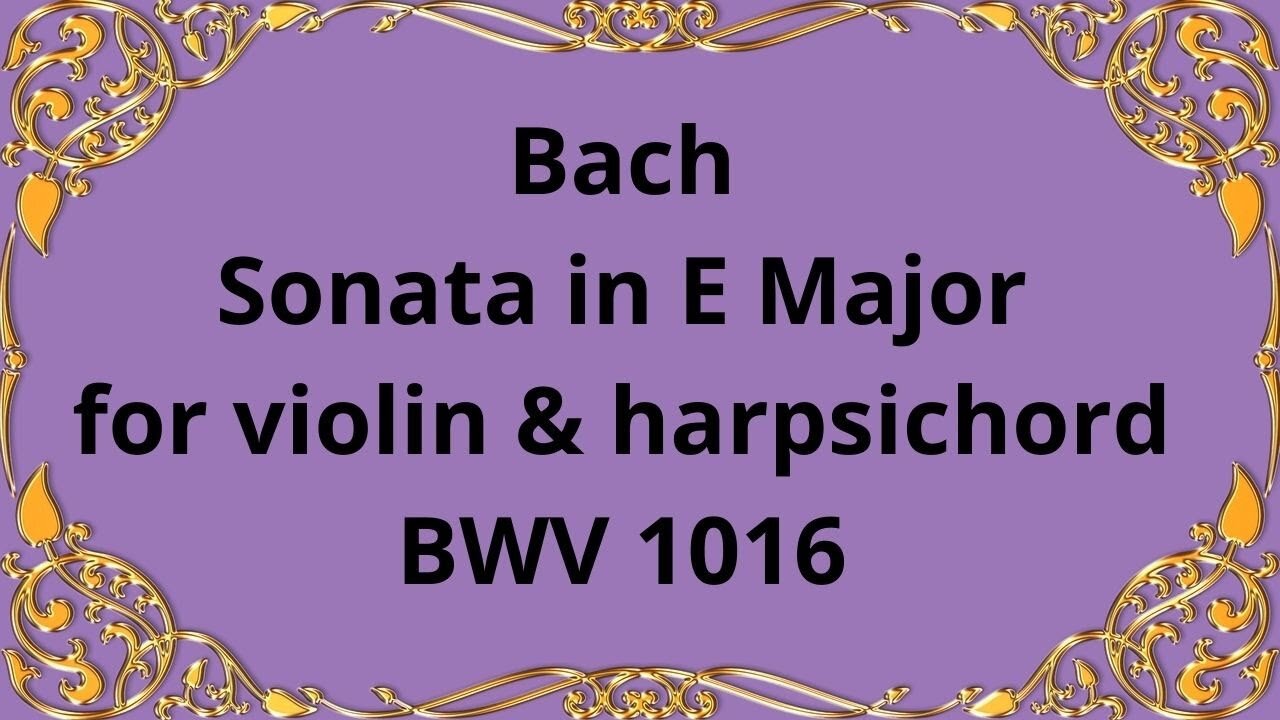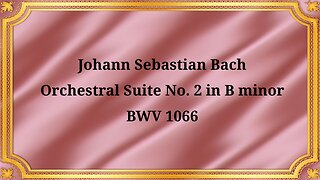Premium Only Content

Bach Sonata in E Major for violin & harpsichord, BWV 1016
#Bach #Sonata #violin #harpsichord #classical_music
The Bach Sonata in E Major for violin and harpsichord, BWV 1016, is one of Johann Sebastian Bach's most famous compositions for this instrumental combination. Written around 1715-1717, it is part of a set of six sonatas for violin and harpsichord, collectively known as the "Sonatas for Obligato Harpsichord and Violin."
This sonata is a prime example of Bach's mastery of counterpoint, which is the art of combining melodies to create a complex and harmonious texture. It is structured in four movements: Adagio, Allegro, Adagio ma non tanto, and Allegro. The first movement is characterized by a slow, melodic line in the violin, accompanied by a simple but elegant harpsichord part. The second movement is faster and livelier, with intricate passages in both the violin and harpsichord. The third movement returns to a slower tempo, with a gentle and lyrical violin melody supported by a more elaborate harpsichord accompaniment. The final movement is a lively and energetic dance-like piece that showcases the virtuosity of both instruments.
The sonata's key, E Major, is known for its bright and cheerful character, which is reflected in the sonata's overall mood. Bach expertly employs various musical techniques such as suspensions, chromaticism, and harmonic progression to create a rich and complex soundscape. The violin and harpsichord parts are often equal partners in the music, with the harpsichord providing both harmonic support and melodic material.
One of the unique aspects of this sonata is the obbligato harpsichord part, which is not just a simple accompaniment but is an integral part of the musical texture. In fact, some scholars have argued that the harpsichord part is just as important as the violin part. Bach was one of the first composers to use the harpsichord in this way, and his influence on later composers such as Mozart and Beethoven is evident in their own works for violin and keyboard.
The Bach Sonata in E Major for violin and harpsichord, BWV 1016, is a testament to Bach's genius as a composer and his ability to combine technical mastery with expressive depth. Its popularity has endured for centuries, and it remains a staple of the violin and keyboard repertoire to this day.
-
 20:26
20:26
Classical music_Music Inspiration
1 month agoJohann Sebastian Bach Orchestral Suite No. 2 in B minor, BWV 1066
842 -
 LIVE
LIVE
LethalPnda
2 hours agoLocked & Loaded! 🔥 Fate Trigger Beta #RazerCreator #SpacePanda @Mystivis
67 watching -
 LIVE
LIVE
BigDaddySlick78's Live Gaming Channel
2 hours ago💰I Pay You To Play Call of Duty Warzone Rebirth Island LIVE #callofduty #warzone #cod #gaming
39 watching -
 1:59:43
1:59:43
Side Scrollers Podcast
2 days agoRIP Hulk Hogan + Payment Processor CENSORSHIP Has Officially Begun + More | Side Scrollers
174K13 -
 LIVE
LIVE
Lofi Girl
2 years agoSynthwave Radio 🌌 - beats to chill/game to
290 watching -
 1:56:31
1:56:31
The Pascal Show
19 hours ago $6.35 earnedGHISLAINE FLIPS?! DOJ Receives SECRET LIST of 100 Epstein Associates!”
17.4K7 -
 10:17
10:17
Dr Disrespect
11 days agoIt's Time To Get Serious
186K31 -
 2:15:09
2:15:09
Badlands Media
1 day agoDevolution Power Hour Ep. 375: Obama’s Orders, Ukraine’s Collapse & the Inversion of Justice
309K121 -
 2:32:03
2:32:03
BlackDiamondGunsandGear
15 hours agoAFTER HOURS ARMORY w/ DLD & John from GOA & FLR
35.6K7 -
 1:05:28
1:05:28
Man in America
16 hours agoTREASON? Obama, Hillary, and Soros in the New World Order Agenda EXPOSED w/ Mel K
103K91